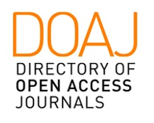Ludwik Fleck's 'active' and 'passive' elements of knowledge revisited
DOI:
https://doi.org/10.24117/2526-2270.2016.i1.12Abstract
A curious feature of medical literature on the evaluation of diagnostic accuracy is the frequent deployment of circular arguments. Using a case study from the medical literature on the diagnosis of child abuse, I argue that this occurs because researchers fail to distinguish what Ludwik Fleck called the ‘active’ and ‘passive’ elements of knowledge. I review the scholarly literature on this aspect of Fleck’s epistemology to try to understand why it has not been put to more use in the medical literature. Scholars have admitted that Fleck’s account of the active and passive elements of knowledge has confused them, and it has been read in at least three different ways: as an extreme form of relativism, as a form of realism, and as a more ‘middle way’ in-between these poles. I argue that he ‘middle way’ view is both more congenial with the bulk of Fleck’s work, and more palatable to medical practitioners.
Downloads
Published
Issue
Section
License
Copyright (c) 2016 Nicholas Roy Biney

This work is licensed under a Creative Commons Attribution 4.0 International License.











